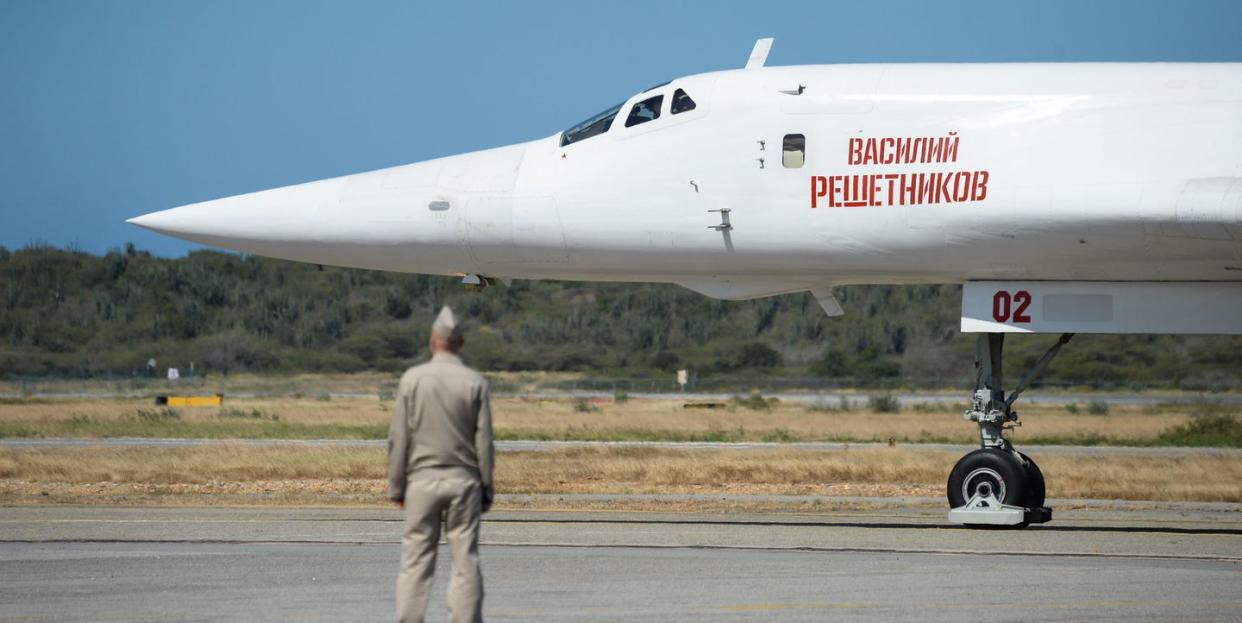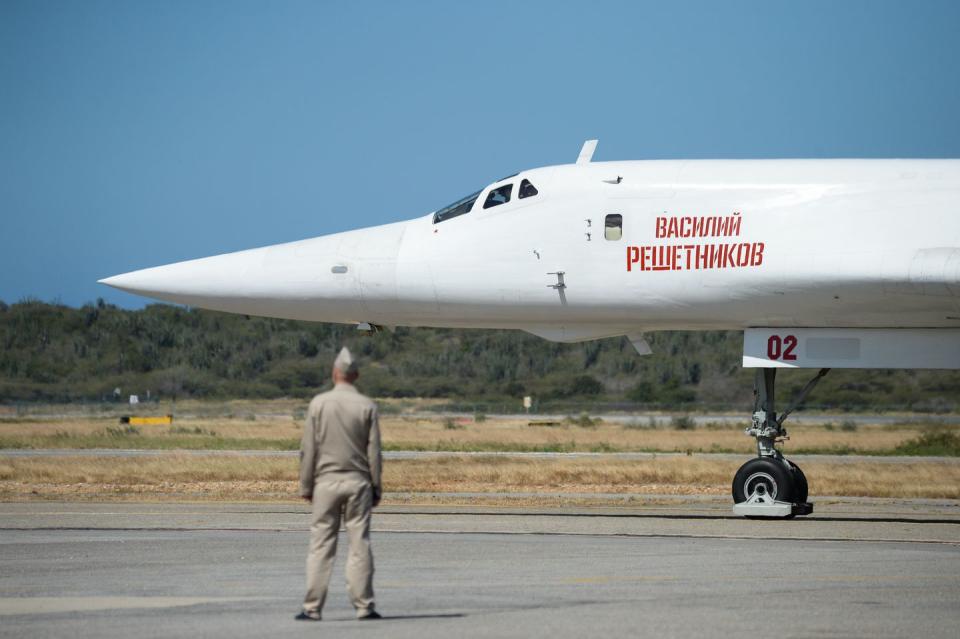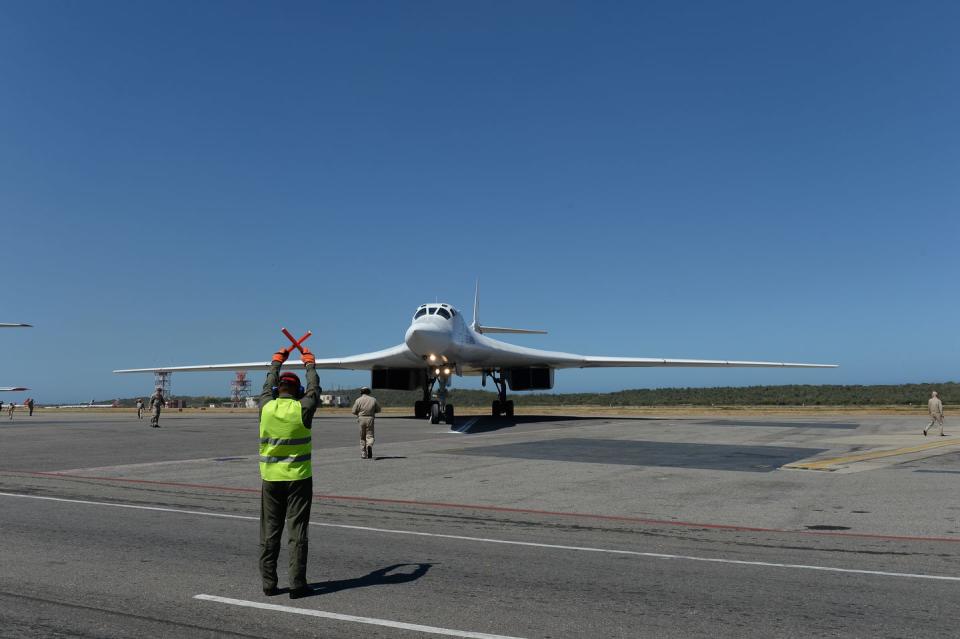What You Should Know About the Nuclear Bomber That Russia Just Flew to Venezuela

Two Russian nuclear-capable bombers flew all the way from their home base in Russia to Venezuela, the first such flight in five years. The bombers, which are not carrying weapons, flew non-stop from their base near Saratov, Russia to Caracas, Venezuela-a distance of more than seven thousand miles. The bombers will undertake military exercises with the Venezuelan military.
According to the Russian Strategic Nuclear Forces Blog, the two bombers are the Vasili Reshetnikov (No. 2) and Nikolai Kuznetsov (No. 10). The two Tu-160 bombers, known as “White Swans” in Russian Aerospace Force service and “Blackjack” to NATO, represent one eighth of Russia’s Tu-160 bomber force. The bombers are typically stationed at Engels Air Base outside Saratov.

Russia’s Interfax news agency reported the two bombers flew more than six thousand miles, flying over the “Atlantic Ocean, the Barents Sea, the Norwegian Sea, (and) the Caribbean Sea." The route, which bypassed western Europe to pass over the Norwegian Sea, likely spanned more than seven thousand miles. The bombers were accompanied by one Antonov An-124 “Ruslan” heavy military transport plane and an Ilyushin Il-62 military passenger plane. The An-124 is the second largest military transport in the world and was likely hauling spare parts for the two aging bombers, while the Il-62 probably carried spare bomber crews and maintainers to keep the planes flying.
Over the Norwegian Sea the bombers were intercepted by a pair of Norwegian Air Force F-16 fighters. As the bombers flew westward they prompted the RAF to scramble two Typhoon fighter jets from RAF Lossiemouth in Scotland. The two Typhoons were carrying Meteor air-to-air missiles for the first time. The Meteor is considered on of the most advance if not the most advanced missile in the world, due to its ability to travel at speeds of up to Mach 4.
The bombers steered far from the continental U.S. and were not intercepted by U.S. forces. The planes proceeded to the Venezuela, where they landed at Maiquetia Airport outside Caracas. There they were met by Venezuelan F-16s and upon landing the crews were greeted by Venezuelan officials. Here’s a Russian Ministry of Defense video of the moment the two bombers touched down in South America:
Russian bombers previously made the trip to Venezuela in 2008 and 2013.
The Tupolev Tu-160 heavy strategic bomber first flew in December 1981. The Tu-160 resembles the American B-1B bomber, with a pointed nose, variable geometry wings and a sleek, tapered body. The Tu-160 is actually bigger than the B-1B but there are fewer of the Russian jets and a long-postponed effort to upgrade them only recently began. The bomber was nicknamed “the White Swan” due to its sleek, graceful appearance and white paint job. The Tu-160 is primarily a cruise missile carrier, typically carrying twelve Kh-55 nuclear-capable cruise missiles or 24 Raduga Kh-15 short range nuclear attack missiles. Russia has used Tu-160 bombers to launch conventionally armed cruise missiles against Islamic State forces in Syria.

The flight follows a state visit by Venezuelan President Nicholas Maduro to Venezuela. At the time, Russian Defense Minister Sergei Shoigu stated that, according to Interfax, the “practice of flights of Russian military aviation to Venezuela’s airfields will continue, and the ships of the Navy will enter the ports of this country.”
('You Might Also Like',)

